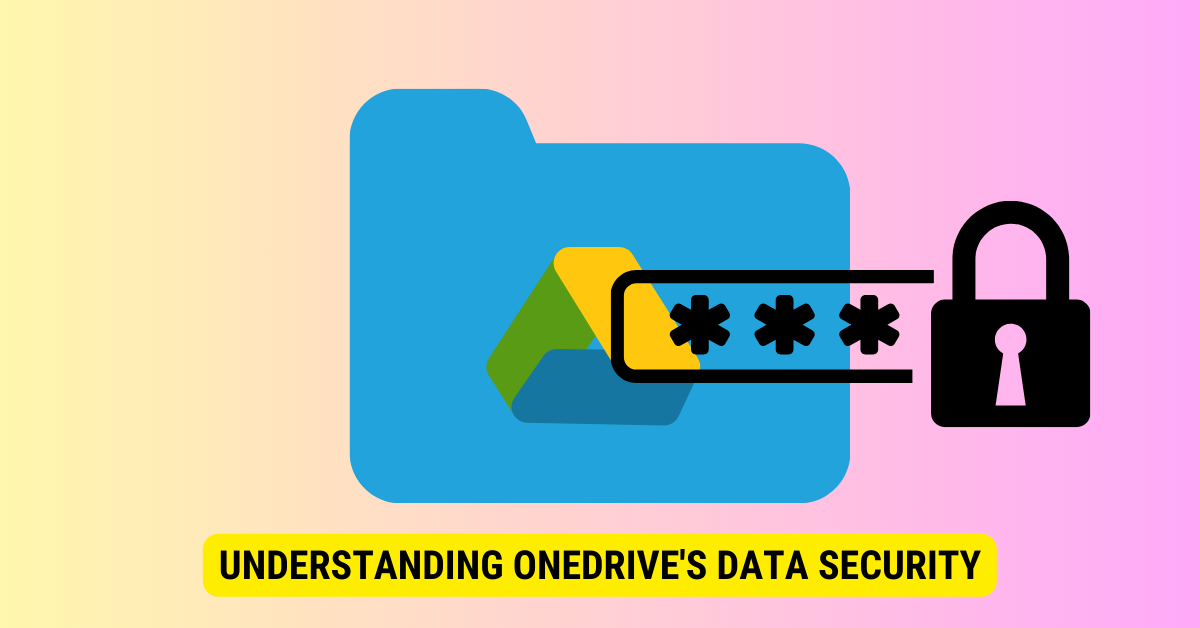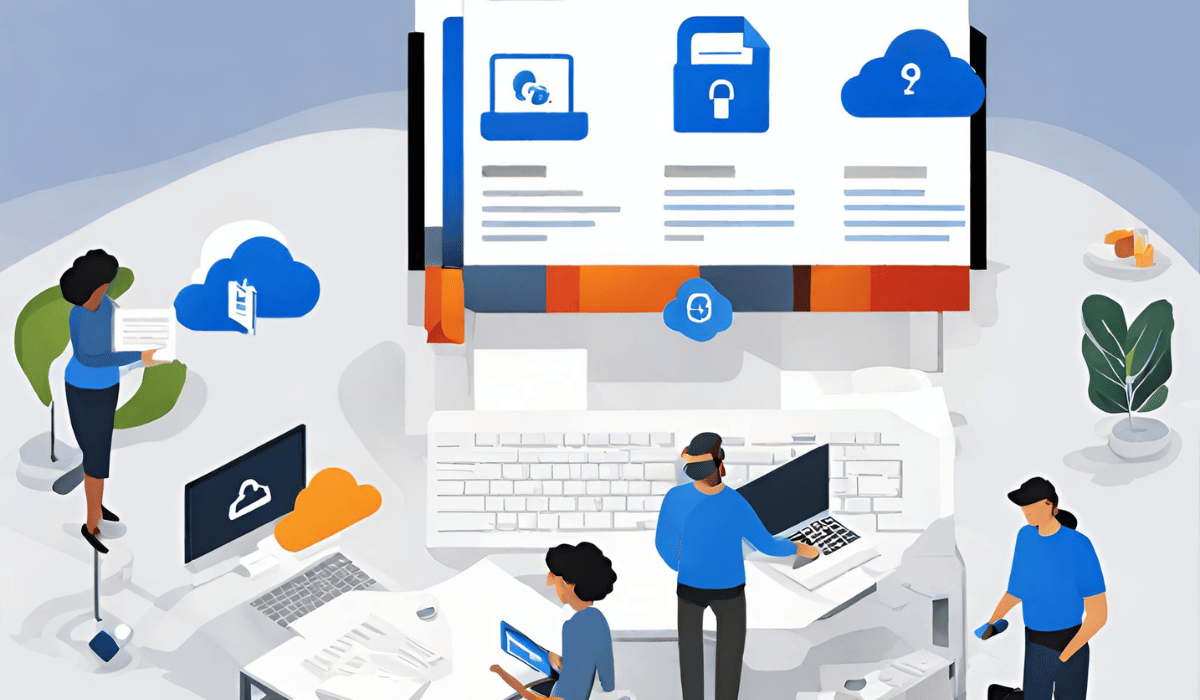OneDrive offers multiple layers of security, including two-factor authentication, data encryption at rest and in transit, and the ability for users to set up personal vaults for extra-sensitive information. However, like all online platforms, its security is also contingent upon the user’s security practices.
OneDrive is a widely used cloud storage service provided by Microsoft. With its convenient features and accessibility, many users rely on OneDrive to store and share their important files and data. However, concerns over data security have become increasingly prevalent in today’s digital landscape. I will explore the various security measures implemented by OneDrive to protect user data, as well as potential risks and ways to enhance security.
Understanding OneDrive’s Data Security

Before delving into the specific security features of OneDrive, let’s first grasp the basics of its data security. OneDrive combines encryption and compliance with global security standards to safeguard user data.
When it comes to protecting user data, OneDrive leaves no stone unturned. It employs multiple layers of security to guarantee operator data’s confidentiality, integrity, and availability. At the forefront is secure transmission, meaning data is encrypted during transit using industry-standard SSL/TLS protocols.
But encryption is just the landfill of the iceberg. OneDrive goes above and beyond to prevent unauthorized access. It integrates strict access controls, ensuring only authorized individuals can access the stored data. This includes multifactor authentication options, such as two-step verification, which adds an extra coating of security by necessitating operators to deliver two forms of ID, such as a password and a unique code.
OneDrive understands that encryption is a vital component of data security, and it employs robust encryption methods to protect user data at rest. Microsoft, the company behind OneDrive, uses BitLocker, a widely recognized encryption technology, to encrypt files stored on OneDrive servers. This guarantees that the data remains secure even if someone gains physical access to the servers.
But OneDrive doesn’t stop there. It takes encryption a step further by implementing per-file encryption. This means that each file is encrypted with its unique key. By doing so, OneDrive enhances security and limits the impact of a potential data breach. Even if one file’s encryption is compromised, the rest remain secure.
With OneDrive’s comprehensive security measures, users can have peace of mind knowing that their data is protected from unauthorized entries and potential breaches. OneDrive confirms that user data remains confidential and secure during transit or at rest.
The Role of Passwords in OneDrive Security

With passwords being a significant component of online security, it is crucial to understand their role in OneDrive’s overall security framework.
OneDrive, Microsoft’s cloud storage service, emphasizes the importance of strong passwords to ensure the privacy and security of user data. Implementing robust password protection measures, OneDrive aims to provide users with a secure and reliable platform for storing and accessing their files.
Importance of Strong Passwords
A strong password is the first line of defense against unauthorized access. OneDrive encourages users to create strong passwords by enforcing complexity requirements, such as a minimum length, a mixture of higher and minuscule letters, numbers, and special characters.
Creating a strong password involves avoiding common patterns and easily guessable information, such as birthdates, names, or consecutive numbers. Users significantly decrease the risk of compromised accounts by selecting a unique and complex password.
Furthermore, OneDrive recommends users refrain from reusing passwords across multiple accounts. This practice ensures that even if one account is compromised, other accounts’ security remains intact.
Regularly updating passwords is also recommended to maintain strong security measures. By changing passwords periodically, users can mitigate the risk of unauthorized access from leaked or stolen passwords.
Additional Password Protection Measures
Besides strong password implementation, OneDrive offers additional security measures for password protection. Users can set up two-step verification, which enhances an extra layer of protection by requiring a second form of identification, such as a fingerprint or a unique code sent to a mobile device.
This two-step verification process ensures that even if someone obtains a user’s password, they would still need the second form of identification to access the account. It provides an added level of security, making it significantly more challenging for unauthorized entities to breach an account.
Furthermore, OneDrive implements AI-powered algorithms to detect and block suspicious sign-in attempts in real-time, keeping unauthorized individuals at bay. These algorithms analyze various factors, such as the location, time, and device used for sign-in, to identify potential threats. If any suspicious activity is detected, OneDrive immediately takes action to protect the user’s account.
Combining strong password requirements, two-step verification, and advanced AI algorithms, OneDrive ensures that user data remains secure and protected from unauthorized access. These comprehensive security measures provide users with peace of mind, knowing that their files and personal information are safeguarded within the OneDrive ecosystem.
OneDrive’s Compliance with Global Security Standards
To adhere to global security standards, OneDrive is committed to ensuring the privacy and security of user data. By complying with various regulations, OneDrive goes above and beyond to provide its users with a secure and trustworthy platform.
One of the key regulations that OneDrive complies with is the General Data Protection Regulation (GDPR). The GDPR is a comprehensive data protection law that aims to give individuals control over their data. OneDrive understands the importance of user privacy and takes the necessary steps to comply with GDPR requirements. This includes enhancing user privacy by implementing robust security measures and providing data processing and storage transparency.
With the increasing importance of data protection in the healthcare industry, OneDrive recognizes the need to protect sensitive patient data. To meet the stringent necessities of the Health Insurance Portability and Accountability Act (HIPAA), OneDrive has implemented advanced security measures and protocols. This ensures that healthcare organizations can securely store and share confidential information without compromising patient privacy.
Furthermore, OneDrive understands that compliance with global security standards is ongoing. As new regulations and standards emerge, OneDrive remains vigilant in adapting its security practices to stay ahead of potential threats. By continually evaluating and updating its security measures, OneDrive strives to provide users with a secure and reliable platform worldwide.
Potential Security Risks with OneDrive

While OneDrive implements robust security measures, it is important to be aware of potential vulnerabilities and take necessary precautions.
OneDrive, Microsoft’s cloud storage service, allows users to access their files from anywhere, at any time. Its unified integration with other Microsoft products has developed a popular choice for individuals and businesses alike. Like any online platform, OneDrive is not immune to security risks.
Common OneDrive Security Threats
Phishing attacks, malware, and data breaches are common security threats that users may encounter when using OneDrive.
Phishing attempts deceive users into revealing their login credentials or other sensitive information. Cybercriminals often send emails that appear to be from legitimate sources, such as Microsoft, asking users to click on a link or provide their personal information. These phishing emails can be highly convincing, making it crucial for users to be cautious and verify the authenticity of any requests.
On the other hand, malware can infiltrate systems through malicious files or links. Once a user unknowingly downloads or opens a file infected with malware, it can spread throughout their device and potentially compromise their data. Malware can range from relatively harmless adware to more dangerous forms, such as ransomware, which can encrypt files and request a ransom for their release.
Although less common, data breaches can occur if proper security practices, such as weak passwords or unsecured devices, are neglected. A data breach can expose sensitive info, such as personal or financial data, to unauthorized individuals. This can have severe penalties, including identity theft or financial loss.
Mitigating Risks in OneDrive
Users can take several proactive steps to mitigate potential security risks in OneDrive.
Firstly, it is crucial to stay vigilant against phishing attempts. Operators should be cautious of suspicious emails or links and avoid clicking on them without verifying their legitimacy. It is always recommended to visit the official OneDrive website or contact Microsoft support to confirm any requests for personal information.
Secondly, regularly updating and running antivirus software can provide additional protection against malware. Antivirus programs can detect and remove malicious files before they can cause harm to the user’s device or compromise their data.
Lastly, users should prioritize password hygiene and enable extra security features, such as two-step verification, to enhance data protection. Choosing strong, single passwords for OneDrive and regularly updating them is essential. Two-step verification enhances an extra layer of security by requiring users to deliver a supplementary form of authentication, such as a verification code referred to their mobile device when signing in to their OneDrive account.
By following these best practices and staying knowledgeable about the latest security threats, users can enjoy the benefits of OneDrive while minimizing the potential risks to their data and personal information.
Enhancing OneDrive’s Security
While OneDrive offers robust security features, users can play an active role in further enhancing the security of their data stored on the platform.
Best Practices for Secure Data Storage
To ensure the highest level of security, operators should follow best practices for data storage. This includes regularly backing up files, organizing them into secure folders, and maintaining a clean account by removing unnecessary or outdated data.
Utilizing Additional Security Features
OneDrive provides additional security features that users can leverage to enhance data protection. This includes enabling alert notifications for suspicious activities, utilizing advanced threat protection to detect and respond to security threats, and implementing access controls to restrict file sharing and collaboration.
Key Takeaways
- OneDrive employs data encryption at rest and during transfer.
- Two-factor authentication provides an additional security layer.
- Users can set up a “Personal Vault” in OneDrive to protect certain files.
- Regular software updates from Microsoft enhance OneDrive’s security features.
- User practices, like setting a strong password and regularly monitoring account activity, are critical in ensuring data security.
FAQs
Q: Does OneDrive encrypt my files?
A: OneDrive uses encryption at rest and during transfer to keep your files secure.
Q: What is the Personal Vault feature in OneDrive?
A: The Personal Vault is an added security layer in OneDrive where you can store your most sensitive files, and it requires two-step identity verification to access.
Q: Can I enable two-factor authentication for my OneDrive account?
A: Microsoft allows you to enable two-factor authentication for added security.
Q: How often does Microsoft update OneDrive’s security features?
A: Microsoft regularly releases updates to enhance security, fix bugs, and improve performance. It’s recommended to keep your software updated for optimal security.
Q: Is it gone forever if I delete a file from OneDrive?
A: Not immediately. Deleted files move to the recycle bin, where they remain for a period before permanent deletion.
Conclusion
In conclusion, OneDrive employs comprehensive security measures to protect user data. By utilizing encryption, enforcing strong passwords, complying with global security standards, and implementing additional security features, OneDrive strives to maintain a secure environment for data storage. However, users must remain vigilant, adopt best practices, and stay informed about potential security risks to ensure the utmost data protection on OneDrive.
